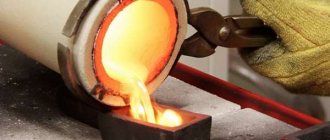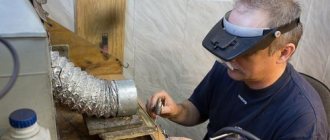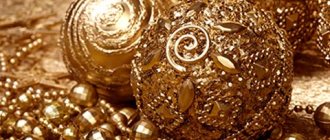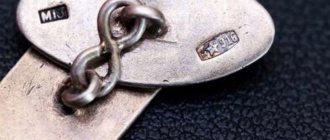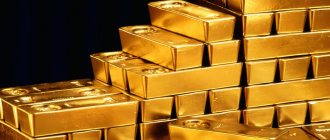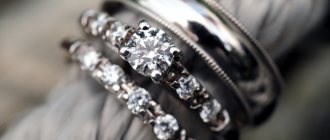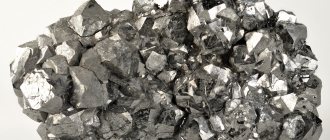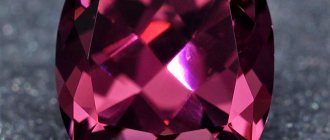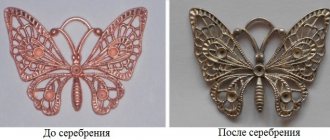Where to find and obtain radio components containing precious metals
Dear Internet users!
Send your photos and notes about where and in what devices you came across radio components containing precious metals. The list of decommissioned and subject to disposal devices, various units and radio communication units, containing precious metals in radio components and radio-electronic components in their composition, is simply huge. Ever since the collapse of the Soviet Union, when everything and everyone fell apart, when chaos and confusion reigned in the country, salaries were not paid, and many, in order to earn at least some money and feed their families, brought home and then dismantled various decommissioned electronic devices into radio components with precious metal devices from institutes and organizations. Until now, such devices are still gathering dust and awaiting their fate in garages, country houses, and sometimes in the open air, covered with corrosion. Well, let's start with the most common one.
Let's say right away that almost all radio components are on the boards. Transistors KT-803, KT-808, KT-809, KT-812, KT-908, KT-912 are usually located in the rear of the devices on aluminum radiators, transistors KT-911, 2T-911B are located on an aluminum base, for heat dissipation on the board.
Switches 11P 3N are attached to the body, and resistors PTP, PP3-41, PP3-43, PP3-47 can be located on a metal base inside the block or attached to the body of the device.
Therefore, you first need to find and disassemble the device or unit, remove the boards, and only after that extract radio components with precious metal. We must be prepared for this. There is an opinion that
TVs made in the USSR contain many valuable radio components. In fact, and in most cases, you can find several green KM5 capacitors there, and less often red KM6 capacitors. And also several KT-203 transistors, which cost 5-6 rubles each.
Parts with gold and the content of precious metal in them
Naturally, not all parts contain a lot of gold. Despite this, some people do not notice the huge amount of gold that they simply throw away. Which parts contain more of this precious metal? To put it into perspective, three computers contain about the same amount of gold as can be mined from two tons of gold ore.
Which parts contain the maximum amount of gold? Some radio components containing this metal are presented in the list:
- Microcircuits. The gold-plated outputs of the chip contain varying amounts of metal. In plastic parts, the gold content is quite low, only 0.5-1.2%; ceramic parts can already contain up to 5% gold.
- Fees. From some boards you can extract an impressive amount of raw materials. For example, most of it in a computer is contained in the motherboard and connectors. Given that computers are becoming cheaper and gold is becoming more expensive on the market, it makes some sense to mine it from a computer. In addition, many people throw away computers without realizing that they contain this valuable metal.
- Semiconductors and connectors. They do not contain much of this metal, but there is not only one connector in a computer.
- Resistors. It is rare in them, because they can use silver or (very rarely) platinum.
You can additionally mine this precious metal from circuit boards and old electronics. In the 70-80s, gold was often used to create many machines and devices. These include:
- military equipment devices;
- computing machines;
- radio tubes and others.
Well, what will come as a surprise to most is that phones also contain it. True, not exactly in phones, but in SIM cards.
RESISTORS
- OMLT type
- MLT type
- Type RPM-2
- Type C2-10
- Type S2-23
- Imported resistors type MLT
- ULI type
- Aircraft type
- Resistors
- Type MMT-4
- Variable resistance type SP5-3, SP5-2
- Variable resistance type SP5-2
- Variable resistance type SP5-2V
- Variable resistance type SP5-2; SP5-2M (plastic case)
- Variable resistance type SPZ-39A (plastic case)
- Variable resistance type SP5-1VA
- Variable resistance type SP5-14
- Variable resistance type SP5-14 (plastic case)
- Variable resistance type SP5-15
- Variable resistance type SP5-22-1 W (plastic case)
- Variable resistance type SPZ-37A-1
- Variable resistance type SP5-16VG-0.05 W
- Variable resistance type SP5-16VA-0.25 W
- Variable resistance type SP5-16TA(VA) 0.5 W
- Variable resistance type SP5-16 VA(TA) 1 W
- Variable resistance type SP5-16VB-0.25 W (metal case)
- Variable resistance type SP5-16VB-0.5 W
- Variable resistance type TESLA WKC7911
- Variable resistance type PPZ
- Variable resistor PPB-18
- Variable resistance type SPZ-9A
- Variable resistance type SP-2-2-10
- Variable resistors
The most valuable foreign and Soviet parts
In Soviet times, much more precious metals were used in the assembly of household appliances and other devices than abroad. This is due to the high quality and long service life of the equipment of that period. Therefore, Soviet devices are a real source of non-ferrous and precious metals. Most of such noble metals as palladium, gold, platinum and silver are contained in Soviet and Western capacitors. The most popular domestically produced capacitors are “KM N30” and red “5D”, in which the platinum content predominates. Palladium can be found in the KM N90 capacitor.
Capacitors “KM N30” and red “KM 5D”
It is these green and red capacitors that contain the most noble metals. Among foreign elements, the following are especially popular among radio enthusiasts:
- Tesla capacitors of different sizes;
- Bulgarian brown and blue capacitors of the “MbC” and “KbC” series marked “220n”;
- TaSF B45176-A1108-K;
- axial MIL-ETAH2.
Specialized enterprises buy and supply capacitors with different markings for use in computer, pulse, noise suppression and other fields of activity. To do this, they enter into supply agreements with trading companies.
MICROCIRCUIT IN PLASTIC CASE
- Series K 131
- Series K 155
- Series K 155, 155 (poor)
- Series K 155 (with duralumin backing)
- Series K 155 (large)
- Series K 158
- Series K 500; 500
- Series K 500 (poor)
- Series K 531
- Series K 531 (with duralumin backing)
- Series K 555; (IR 22.23) (with duralumin backing)
- Series K 555
- Series K 555 TM 8(9)
- Series K 556 (large with duralumin backing)
- Series K 561
- Series KR 565
How to find out where the precious metal is contained
You can find out which radio components contain the largest amount of valuable materials in special reference books. You can also find photos of valuable parts online and compare them with your own. From photographs you can also preliminarily determine the cost of the goods, based on prices on the Internet
Please pay attention to the model number and year of manufacture.
It should be noted that radio components are valued differently than other recyclable materials. The assessment is made depending on the content of valuable material, the year of production of the part and the method of applying precious metals. Most often the material is used in the form of spraying. The most expensive radio components are those in which non-ferrous metals are present in their pure form. Thanks to modern recycling technologies, it is possible to extract precious metals from even the thinnest layers.
You can ask for help in detecting precious metals at the collection point. Employees of a company that operates legally will always advise the client and advise him on issues of interest. Such organizations employ professionals who, after examining the device, can tell whether it contains valuable radio components. Many companies also have websites that display photos of the most expensive radio components and their prices. Based on the information provided on the site, you can independently evaluate the existing product, and then go to return it.
You can also compare the cost of one or another radio component offered by different companies. You should not sell parts to private buyers; they always offer a low price and can use precious metals for illegal purposes.
◄ Back to news
Where to look for radio components with precious metals - start with collectors
Many useful articles on the Internet indicate various sources where you can find some Soviet electronics. But for some reason, rarely does anyone point out the large number of collectors in our country who collect various old dilapidated Soviet equipment.
It is from them that you can get extremely valuable military electronics, which contain a huge number of valuable rare earth metals, some samples of which are now more expensive than gold.
Collectors not only have their favorite “toys” that lie around the house and delight them with their appearance, but also their storage rooms often contain special-purpose Soviet-era electronics that are literally replete with riches.
◄ Back to news
What palladium parts look like in old TVs.
Many newcomers, when searching for precious metals in Soviet electronics, believe that gold, silver and palladium in technology are in the form of ingots. At best, they think that some individual elements are cast from precious metal.
In fact, both palladium and silver, for example, in most cases are present only as a coating on individual radio components or, as an option with gold, in the form of thin threads in microcircuits and beam lamps. Finding a part entirely cast from gold, platinum, and especially palladium in televisions and other Soviet technology is not realistic.
Palladium is present in TVs only in one single form, as part of a thin coating on ceramic tiles of KM capacitors. The most common of these capacitors are the H90 series in green and red. There are also earlier versions of capacitors painted blue.
There are no palladium lamellas in TV, as is the case, for example, in computer boards, there are no PP-3 resistors, the contacts of which are made of an alloy with 20% -80% Pd, and there are also no RES-8 with contacts made of this metal. Everything that can be found in an old “box” made of this noble alloy (I emphasize that we are only talking about palladium, gold and silver come in different parts) is only KM.
Interesting City campaign for collecting waste paper “paper boom” - presentation
Green KM capacitors. Palladium. Photo by the author.
Green KM capacitors. Palladium. Photo by the author.
Precious metal in capacitors
A capacitor is an electrical device that performs various functions in microcircuits due to its ability to accumulate electric field energy, pass alternating current and not allow direct current to pass through. Such elements, especially Soviet-made ones, contain gold, silver, palladium and platinum. Radio components that go to waste are divided into groups:
- ceramic capacitors;
- capacitors in an iron case;
- radio components in a silver case;
- capacitors in tantalum housing.
For each type of element, a tariff schedule has been developed and criteria for the delivery of recyclable materials have been determined: by weight or piece by piece.
Technologies for producing precious metals from radio components and alloys
The very first stage in the technology of obtaining precious metals from radio components is the preliminary preparation of all elements. Before processing, raw materials must be removed from unnecessary parts. Plastic and ceramic parts (cases), polymer materials and metal elements that do not contain any precious metal are removed. Having completed this stage, the task will become much easier, and the dissolution process will go much faster.
Getting gold
To obtain gold from radio components, you will need a special room, reagents, utensils and time. Reagents in the form of hydrochloric and sulfuric acid must be mixed in appropriate proportions. After heating the solution, the parts are placed in it and nitric acid is added. Gold appears at the bottom of the container in the form of a sediment, and other impurities dissolve. It is very difficult to see this sediment with the naked eye, since this precious metal is found in radio components in small quantities. Precipitation takes about 4 hours.
If gold is present in an alloy containing brass or copper, then the principle of electrolysis can be used. When parts are placed in an acid solution, this method is called anodic dissolution.
Getting silver
Technologies for producing precious metals from radio components are similar to each other. For different elements, acid solutions in different proportions and different densities are used to carry out chemical reactions. To extract silver, sulfuric acid is also used, to which nitric acid is added. In this case, the temperature of the mixture should be 80 degrees Celsius.
You can also use the electrolyte oxidation method to extract the silver. This method is dangerous due to the reaction of the chemicals and their volatility. For this reason, the procedure is carried out in a fume hood. The result is silver chloride. It must be subjected to repeated filtration to obtain pure metal.
Getting Platinum
To obtain platinum from radio components, you will need special equipment. Refining can be carried out using nitric acid. The precious metal will remain in sediment. The remainder of the solution is carefully poured into a separate container, after which clean metal is removed.
Our purchase has a laboratory that is fully adapted for work and equipped with all the necessary materials and equipment. This allows us to comply with the technologies for producing precious metals from radio components. On any day you can sell radio components in the Kaluga region to get the desired amount for it.
◄ Back to news
Where and what kind of precious metals are found?
Unfortunately, modern production tries to reduce the cost of everything possible as much as possible, and therefore relatively new technology, if it contains precious metals, is in very small quantities. At the very least, from household appliances and other fairly widespread equipment at the moment it will not be possible to identify anything truly worthwhile, so the cost of such devices and parts tends to zero as soon as they lose their practical value.
A completely different matter is equipment and electronics produced in Soviet times, especially if this equipment was created not for mass use, but for the interests of the state. No resources were spared in the development and production of such devices, so many devices, even in a single copy, contain enough precious metals for their cost to be estimated at several thousand or more.
Those who are seriously involved in electronics will find this article about ways to connect the windings of an asynchronous electric motor into star and delta will be useful.
What precious metals can you find?
In most cases, silver and gold were used due to their comparative cheapness and fairly wide distribution. However, these precious metals are far from the only ones that can be found in radio components, and other metals sometimes cost many times more than gold.
There is a chance to meet the following precious metals in radio components:
- Silver;
- Gold;
- Platinum;
- Iridium;
- Palladium.
In some cases, you can also find some types of rare earth metals. The chance of the latter option is relatively small, since the expensive production and use of rare earth metals in radio components should be determined by necessity and expediency. Mass production of household appliances, naturally, did not create such a need even in Soviet times, and therefore the chance of a successful search is small.
What devices contain precious metals?
The maximum amount of precious metals is found inside Soviet measuring equipment and computing instruments.
Examples of such techniques are:
- Electronic models of voltmeters;
- Generators, especially high-frequency ones;
- Frequency synthesizers;
- Oscilloscopes;
- Frequency meters.
In almost all such devices, the number of parts containing precious metals is as large as possible compared to other equipment. However, there are extremes here: some devices can have up to several grams of precious metals inside, while other devices have an insignificant amount that is not worth the cost of searching and returning.
Gold and silver
Gold is contained in such Soviet-made radio components as:
- microcircuits;
- radio tubes;
- transistors;
- capacitors;
- resistances (resistors);
- semiconductors;
- connectors and others.
We have provided here a list of only the main parts that may contain gold. It is quite difficult to provide a complete list of them. Let's try to figure out in what form and whether all of the listed radio components contain gold in its pure form, and how it can be extracted.
Microcircuits. In parts such as microcircuits, the yellow precious metal is present in the form of gold-plated leads, which, as a rule, are pressed into the microcircuit body.
Various types of microcircuits
The main characteristics of microcircuits in the context of gold content are:
- method of applying gold plating – galvanic;
- quantitative indicator of gold content – from 1% to 10%;
- the mass fraction of gold-bearing leads from the total mass of the microcircuit is about 30% of the total mass of the product (microcircuit);
- total gold content: in plastic chips – from 0.2% to 1%; in ceramic – from 1% to 5%.
Radio tubes. Old radio tubes also contain gold, which during their manufacture was deposited on a grid located next to the cathode. The need for such a gold coating was due to the fact that when the grid is heated by a cathode in the absence of a gold coating, such a grid itself becomes a source of electrons. At the same time, the legs of some old radio tubes were plated with gold for durability.
Transistors. In transistors, the yellow precious metal is contained in the form of a substrate located under the conductor and crystal. The percentage of gold in transistors depends on the type of the latter and ranges from 0.3% to 2%.
Capacitors. This is a specific type of electronics, which includes separate subtypes that differ from each other in shape, size and (or) composition. Vacuum variable capacitors, which were rarely used in the production of military radio stations and HF generators, contained gold.
Types of capacitors
Resistors. These radio components, as a rule, do not contain gold. Silver is most often found in resistors.
Resistors
Semiconductors. The following semiconductors can contain gold and other precious metals:
- diodes;
- Zener diodes;
- optocouplers;
- thyristors and others.
As a rule, gold and other precious metals are included in electronic computers of the SM and EC series, in which gold is present in a volume of 0.2 to 10 kilograms.
We invite you to familiarize yourself with the table, which shows data on the gold and silver content in such semiconductors as:
- thyristors;
- diodes;
- Zener diodes;
- optocouplers;
- varicaps.
It is important! The table shows the values of gold and (or) silver content in grams per 1000 pieces of radioelements
| the name of detail | Gold content in grams | Silver content in grams |
| KS412A | — | 0.05 |
| KS115A | — | 0.05 |
| IPTs06A-5/40K | 17.85 | 18.47 |
| IPV70A-4/5 7KV | 16.55 | 32.09 |
| AOT137A | 4.74 | 0.15 |
| 1523P1 | 19.23 | 33.11 |
| KD2995A | — | 30.02 |
| KD2995B | — | 30.02 |
| KD2995V | — | 30.02 |
| KD2995G | — | 30.02 |
| KD2995D | — | 30.02 |
| KD2997A | 4.7 | — |
| KD2997B | 4.7 | — |
| KD2997V | 4.7 | — |
| KD2999A | 3.26 | — |
| KD2999B | 3.26 | — |
| KD2999V | 3.26 | — |
| AOU115A | 0.53 | — |
| AOU115B | 0.53 | — |
| AOU115V | 0.53 | — |
| KIPD05A-K | 0.6 | 0.06 |
| KIPD05B-L | 0.6 | 0.06 |
| KIPD05V-Zh | 0.6 | 0.06 |
| KIPD06A-K | 2.27 | 0.18 |
| KIPD06B-K | 2.27 | 0.18 |
| KIPD06V-L | 2.26 | 0.18 |
| KIPD06G-L | 2.26 | 0.18 |
| KIPD07A-K | 0.74 | — |
| KIPD07B-K | 0.74 | — |
| 3OU103B | 13.84 | — |
| 3ОУ103В | 13.84 | — |
| 3OU103D | 13.84 | — |
| 2D2997A | 4.7 | — |
| 2D2997B | 4.7 | — |
| 2D2997V | 4.7 | — |
| 2D2999A | 3.26 | — |
| D406APR | 0.04 | 33.86 |
| 2А131А-3 | 0.03 | — |
| 2А551А-3 | 0.03 | — |
| 2A551B-3 | 0.03 | — |
| 2А551В-3 | 0.03 | — |
| 2A551G-3 | 0.03 | — |
| 3A119AG-6 | 1.26 | — |
| ZOT102A | 14.24 | — |
| ZOT102B | 14.24 | — |
| ZOT102V | 14.24 | — |
| ZOT102G | 14.24 | — |
| ZOT110A | 14.24 | — |
| ZOT110V | 14.24 | — |
| ZOT110G | 14.24 | — |
| ZOT123A | 14.24 | — |
| ZOT123B | 14.24 | — |
| ZOT123V | 14.24 | — |
| ZOT123G | 14.24 | — |
| ZOU103A | 13.84 | — |
| 2U215A | 0.05 | 82 |
| 2U701A | 0.06 | 381.6 |
| 2U701B | 0.06 | 381.6 |
| 2U703V | 0.06 | 381.7 |
| 3А748А | 5.53 | 2.31 |
| 1138P1A | 26.61 | 30.56 |
| ZLS324V-1 | 12.85 | 24.48 |
| ZOD120B-1 | 0.65 | — |
| ALS324V-1 | 12.85 | 24.48 |
| KD2996A | 2.57 | 113.78 |
| KD2996B | 2.57 | 113.78 |
| KD2296V | — | 113.78 |
| 2D2998 | 2.57 | 45.61 |
| 2D204A | 0.33 | 34.63 |
| 2D204B | 0.33 | 34.63 |
| 2D204V | 0.33 | 34.63 |
| 2D206A | 4.42 | 31.27 |
| 2D206B | 4.42 | 31.27 |
| 2D206V | 4.42 | 31.27 |
| KD204A | 0.33 | 34.63 |
| KD204B | 0.33 | 34.63 |
| KD204V | 0.33 | 34.63 |
| KTs201V | 3.3 | 46.25 |
| KTs201G | 3.3 | 46.25 |
| KTs201D | 3.3 | 46.25 |
| KTs201E | 5.28 | 73.99 |
| 2TS202A | 1.32 | 18.5 |
| 2TS202B | 1.32 | 18.5 |
| 2Ц202В | 3.3 | 46.24 |
| 2TS202G | 3.3 | 46.24 |
| 2TS202D | 3.3 | 46.24 |
| 2Ц202E | 5.28 | 73.99 |
| 2A103AR | — | 105.55 |
| 2A103BR | — | 105.55 |
| D606 | — | 104.02 |
Interesting The problem of solid waste disposal in Russian cities
The table shows only the main parts that have the highest gold and (or) silver content. In fact, their quantitative indicator is several times higher than that presented.
RELAY
- RES 6
- RES 9
- RES 10
- RES 15
- RES 22
- RES 32
- RES 34
- RES 44
- RES 47
- RES 48
- RES 49
- RES 54
- RES 55; RES 64
- RES 59
- RES 60
- RES 78
- RES 80
- RPS11/5
- RPS18/7
- RPS32B
- RPS34A
- RPS42B
- RPV 2/7
- RP4, RP5, RP7
- RGK15
- REC 23
- PPI
- RKM 1
- R154POT
- DP12
- REN 33
What types of silver are there?
Silver is a noble metal characterized by high ductility. Products made from it do not rust or oxidize. Due to the fact that silver is very soft, other metals are added to it to make jewelry and tableware, this prevents the products from deforming. To regulate the amount of impurities, and also to ensure that the buyer is confident in the quality of the purchase, the concept of “sample” arose. It shows what proportion of silver was used in the alloy. The best standard of silver for jewelry is 925. This means that in one kilogram of the entire alloy there are 925 grams of pure silver and 75 grams of other metal. The sample is stamped on the jewelry in the form of a stamp.
Ring, hallmark on 925 silver
Buyers are often interested in the question of what grade silver is. Russian silver products meet international standards when assayed. Copper is most often added to jewelry - the metals interact well with each other. If jewelers add cadmium to a piece of jewelry, its price increases noticeably.
Nickel, aluminum, and zinc can be mixed with silver, but copper in the alloy is a generally accepted classic.
925 silver tableware
There are many standards of silver, in poor countries it is acceptable to use 600, but 800 is considered minimally acceptable. The more alloys added to a product, the stronger the tint it will have. How can you tell whether someone is offering you good or bad silver? For example, in jewelry of the 600th standard, a red tint is clearly visible - due to the critical copper content. Such products oxidize quickly (silver is not subject to oxidation, but copper is not).
Jewelers in Russia use 720-grade silver to make various decorative trinkets: cufflinks, locks, springs, needles and fasteners. Utensils are made from 800-grade silver: spoons, forks, pepper shakers and salt shakers, shot glasses, glasses and mugs, oil dishes and other kitchen utensils. You need to take good care of these cutlery by cleaning them regularly. 875 silver is still of low quality, but not only tableware, but also interior decorations are already made from it.
High-quality products contain 916 grams of silver per 1 kg of alloy. Often, various sets are made from such an alloy, which are decorated with gilding or covered with enamel.
Silver rings, earrings, pendants or chains are made from 960-carat alloy, which practically does not differ in its properties from pure precious metal. They look sophisticated and elegant, but require careful handling and careful maintenance. Products with a high admixture of silver are very soft and ductile.
999 silver
In Japan and other countries of the Far East, there are products made of silver of the highest standard - 1000th. Residents believe in the mystical power of the metal; they believe that it is connected with the Moon and endowed with magical properties. During manufacturing, it is not mixed with ordinary “base” metals.
Separately, it should be said about the royal silver of the 84th standard. Now you can hardly find it anywhere except in family sets, museums and antique stores, and also, not surprisingly, at flea markets. It was made in Russia even before the revolution. In those days there was a different measurement system - the sample was measured in spools. The weight of pure metal in the product is 0.88 grams. Silver, 84 purity, is a journey into history. Products of 84 standard are very rare, but if desired they can be found on sale.
Silver hallmark table:
Silver samples
Sales of the resulting metal raw materials and its average price per gram
A large volume of technical scrap of precious metals collected during the recycling of radio electronics will become a source of income. Reprocessing radio components using nitric acid reduces the purity of silver alloys. The result will be a precious metal with copper impurities of approximately 980 grade. When mechanically disassembling radio components, pure scrap 999 is obtained.
The amount of income depends not only on the amount of silver or other precious metals collected. A kilogram of waste precious metals will cost 2–4 thousand more than a small amount of scrap
It is important to choose the right place of purchase, where a professional assessment of the value of recyclable materials is carried out. In 2021, the market prices are as follows:
- the cost of 1 g of pure silver 999 ranges from 24 to 35 rubles;
- 980 standard – 21–27 rubles;
- 960 standard – 16–22 rubles.
Silver is prized by jewelers. It is accepted:
- in workshops;
- pawn shops;
- organizations involved in the recycling of radio equipment;
- There are private advertisements on Internet resources.
Industrial silver and other precious metals are used in large quantities in radio electronics. Disposal of electronic equipment and household equipment is carried out in order to minimize the harmful impact on nature. This activity brings significant profits; some companies are engaged in the extraction of precious metals from radio components.
Recycling and recycling of precious metals: processing of scrap equipment containing precious metals
How to dispose of sulfuric, hydrochloric, nitric and other acids
Electronic waste disposal methods
Rules and methods for recycling bank cards and ATMs
Where is mercury used in industry and in everyday life?
Do you sort garbage?
Not really
List of TVs that contain palladium.
You can't get rich by dismantling 1 TV. To earn more or less serious money, this hobby should be practiced on an ongoing basis. It will not be possible to obtain 1 kg of palladium from one domestic Berezka.
In the best case, with a certain amount of luck and knowledge of where to look for palladium radio components from 1 broadcaster, you can get from 0.3 to 1.5 grams of this metal (implying the net mass of the metal obtained after refining).
I am attaching a list of TVs that, according to the passport, contain CM, as well as the weight of precious metal per product below.
Electron-711:
Gold - 0.1. Silver - 6.3. Pd - 0.41.
Vityaz 34TB b/w:
Gold - 0.02 Silver -1.29. Platinum - 0.05. Pd
—
0,45
Vityaz 34TB401D-1 b/w:
Gold - 0.02. Silver - 0.59. Pd - 0.17.
Vityaz 37TC6020:
Gold - 0.067. Silver - 0.97. Pd - 0.222
TV Crimea-218:
Gold - 0.41. Silver - 1.5. Pd - 0.10
Electron-711.
Electron-711.
Of course, this is not a complete list of USSR televisions containing platinum group precious metals. This is just an example of the data indicated in the official passport of the device.
Interesting Wastewater discharge
Also, find palladium parts
It is also possible in equipment that does not have them according to the passport. The fact is that in Soviet times, radio electronics served the user for five or even ten years (unlike modern ones).
During this time, the equipment was repaired and modified by local craftsmen, and “weak” capacitors were replaced by craftsmen with more reliable palladium ones. In addition, with the introduction of new broadcasting technologies on most models, radio signal receiving units were also modified by specialists, as a result of which additional N90 CMs were installed in them, giving more stable performance.
other noble metals are also present in USSR technology
.
For example, in the PTU-1 TV, according to the reference book, there are 1.27 grams of gold and 2.24 grams of silver. But in its older brothers the TV is PTU-55. gold 7.44, silver 51.93,
.
In vocational school-58 there is 14.8g of gold. Silver 120.28 grams
.
MICROCIRCUIT IN CERAMIC CASE
- KM155TM7
- KM 555TM2
- AOD109A; ZOD109A
- (K)1NT251,661;2TS622B
- 1LB337; 1DR331; 1TK331
- 564 LA7, LE5, TM2, LN2
- 132 RU1
- 564 PU 4
- 564RU2(KP1)
- 537 RU2
- 169UL1
- 142 EH2B; KND1(5)
- K565RU2;K507RU1
- K565RU1
- 556 RT 5A
- 556 RT 7A
- Series 286
- 133IR13
- (K)505RES
- K573 RF5(2)
- KS 573 RF2
- KM 804
- K1ZhG 451
- K5ID011
- 543 KNZ
- 2TAK291B
- K2IE301 B; 2IE302B
Sources of precious metals
When trying to figure out how to extract gold from microcircuits at home, you should review the contents of the old mezzanines and get out all the “junk” from there.
Experts say that the precious material may be present in the following devices:
- TVs.
- Electrical appliances.
- Radios.
- Tape recorders.
You can look for precious metal in a variety of objects that are lying around in the garage or old sideboard.
So, first of all you need to pay attention to the following details:
- Transistors that have a special crystal and gold-plated conductor. As a rule, these are transistors of the KT series (101, 103, 117, 603).
- Microcircuits that were coated with gold by galvanic means, that is, under the influence of electric current.
- Connectors from the times of the Soviet Union also have a gold coating, several microns thick.
- Radio tubes. Such details contain not only gold, but also silver, platinum and tantalum. To study the composition of a specific element, you can enter the code in the corresponding line with the decoding or explore old literature.
- D series semiconductors, LEDs, thyristors and other items of this type.
- Capacitors.
- Modern SIM cards. And although the precious metal content in such a product is quite insignificant, in a few years you can collect quite a decent amount of gold.
- Old wristwatch of the elite series. Most Soviet watches were plated with gold.
- Details of modern computers. You can extract any amount of gold from computer components, such as the processor, motherboard connector and others. The older the computer, the more precious metals it will contain.
TRANSISTORS
- 2T(KT)117 G
- 2T 203 (A, B)
- KT 203 B
- 2T208(A, B, V, D)
- KT3102A, B, G
- 2T(KT)3117A
- 2T312V
- KT312V
- 2T312B
- KT312B
- KT 312 B (yellow)
- 2T313(A, B)
- KT313A, B
- 41 C 8
- KT501 I
- KS 508
- BSAR 77 A
- WE WN (imported)
- ZEX2 (5, 7) (imported)
- 2U(KU)101 (A, B, E, G)
- AOT110A
- P 309
- KT 505 series
- Series 2T6 551
- KT(2T)603(A,B)
- 2T 603 A (white)
- KT(2T)608(A,B)
- KT 608 B (white)
- 2T 635 A
- 2Т6 821
- 2T831 B(830 B)
- TESLA KRU 18 (imported)
- TESLA KRU 18 (imported)
- TESLA KF 508 (imported)
- TESLA KF 517 (imported)
- SSY 20 V (imported)
- SF 129 C (imported)
- SF129C (imported)
- SF129C
- MP 13, 14, 15,20,21,26
- 1T308(A, B, C)
- 1T403G(GT403G)
- P416A
- 2T(KT) 602 B (yellow)
- 2T(KT) 602 A, B (white)
- Series 13В44.87ХЗ, 19С17
- KT 909 B
- KT(2T)914A
- Transistors in a metal-plastic case
- Series 800
- Series 900
- Transistors
Which radio components contain precious metals?
Precious metals contain many radio components, including:
- connectors;
- microcircuits;
- transistors;
- diodes;
- relay;
- capacitors;
- resistors;
- circuit breakers;
- radio tubes.
Of course, precious metals are not contained in all connectors, microcircuits and other radio components, but only in some types. Even in identical parts that contain precious metals, their quantity can vary greatly and depends on the year of manufacture. That is why radio components have different values, which directly depend on the content of precious metals in them.
The main value in this regard is Soviet-era electronics, namely computer blocks and various military equipment. For example, in the once famous EC series computers, the content of precious metals can range from several hundred grams to 10 or more kilograms! Considering the current cost of gold and silver, disassembling and handing over this electronic equipment to a specialized company can bring more than significant income.
Approximately half of all gold and silver used in electronics production was spent on contacts and connectors. These precious metals provide very high-quality contact, which is why they are widely used. Typically, the contact base was made of copper or brass alloy; only the contact pads themselves were made of precious metal.
The rest of the gold and silver is found in microcircuits, transistors, variable resistors and other electronic components. Precious metals such as platinum and palladium are mainly found in ceramic capacitors.
Some radio tubes contain a large amount of gold - for example, the GMI-19 lamp contains as much as 16 grams of gold! Many other radio tubes also contain gold, silver and platinum, but the amount of precious metals in them is usually quite small and usually amounts to thousandths, less often hundredths or tenths of a gram.
Extraction of precious metals from radio components
The content of precious metals in radio components is, as a rule, low, which significantly complicates their extraction. Only in rare cases is it possible to directly extract precious metal from an electronic component - for example, by biting off gold or silver contacts. It is impossible to extract precious metals from microcircuits, transistors, diodes and other electronic components in the same way.
That is why, in the vast majority of cases, precious metals are extracted from electronic components at specialized enterprises that have the necessary equipment and technologies. At the same time, raw materials are supplied to enterprises in an already prepared state, sorted into specific groups.
The finished raw material goes through several stages of physical and chemical processing, during which the concentration and release of precious metals occurs. All these processes are quite complex, so they are almost impossible to carry out independently at home. In addition, large volumes of raw materials are required, which are very, very difficult for a private individual to collect.
Taking into account the complexity of separating precious metals from radio components, this work should be carried out only at specialized enterprises. If you have old radio components that contain precious metals, your best bet is to hand them over to companies that collect and recycle electronic components. In particular, you can always contact us.
Connectors for scrap
Connectors, like microcircuits, contain a large amount of precious metals, the cost of which is determined solely by weight. When accepting electromechanical devices for scrap radio components, buyers take into account the following factors:
- Production: domestic, imported.
- Products of the Soviet period, year of production.
- Usage: used, new.
Experts have determined that per kilogram of resistors made in the USSR, there are 25 grams. precious metals. In European analogues it is five times less.
The requirements for connectors are minimal. Elements can be with wires, disassembled to metal rings, with or without a board. In demand: RPPG, RS, ONP, RPPM, SNO, SNP, SNTs, ShR.
Danger of chemical processes
If you want to start melting old radio components and microcircuits in order to process them into precious metal, you need to understand that any interaction with acids can be accompanied by unpleasant consequences. Depending on the method used, the procedure itself can last for a long period of time. If we talk about “regia vodka,” that is, the refining of metals, then this requires at least six hours of hard work.
During this process, too much nitrogen is released, so this action should be carried out in a closed area with good ventilation. During the procedure, the windows must be opened for free circulation of air flows.
Just one breath of poisoned air can seriously harm your health and lead to painful death. Unfortunately, the process of poisoning of internal organs occurs too quickly, so doctors simply do not have time to provide the victim with the necessary assistance.
After the first cleaning with aqua regia, small flakes with a brown tint should appear on the surface. Unfortunately, the quality of such raw materials is not entirely high, but if repeated cleaning with acids is applied, it will increase significantly.
It should be noted that in Soviet times, gold was almost always combined with copper. But isolating such metal and carrying out the removal process is not entirely simple. This may take several hours. The effort expended is justified by the fact that the final product is obtained in almost pure form - 999 purity.
Where is it contained?
Technical alloys are used to create much of what we use every day. If you are reading this article at work, look around and look at the office equipment - there is silver in every device and microcircuit. One power supply contains 1.5 g.
The more modern the device, the less precious metals it contains and, accordingly, the more difficult it is to extract them.
The state controls the disposal of equipment not only for reasons of environmental safety, but also to reduce the loss of precious metals during processing. Only licensed organizations can accept high-tech scrap containing precious metals from the population—for example, there are several dozen of these in Moscow.



